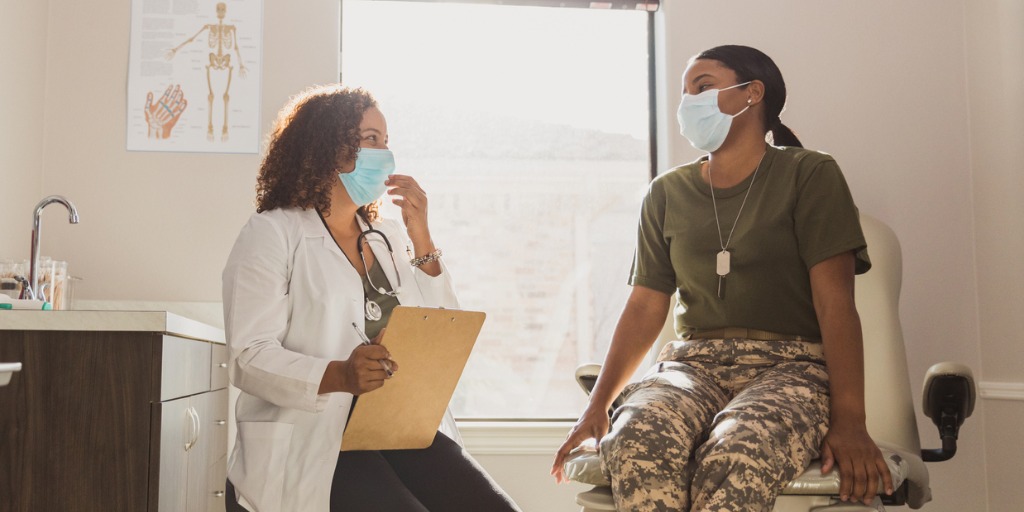What does it mean to be patient-centric in medical research?

“Patient centricity” is a term that you hear a lot in the medical research industry. As defined in a BMJ Innovations article, it means: “Putting the patient first in an open and sustained engagement of the patient to respectfully and compassionately achieve the best experience and outcome for that person and their family.”
Researchers surveyed hundreds of key stakeholders to come up with the central definition above, but this term can take on different meanings for different groups of people. For us, it’s about letting the patient voice drive how we think about the entire clinical trial process, from protocol design to recruitment advertisements and logistics for visiting a site. Creating a patient-centric solution involves getting feedback from real patients and their loved ones, and making decisions based on their needs and perspectives.
What does it mean to be patient-centric in medical research? We highlight examples of patient-centric approaches to clinical trials and medical research.
Work with patients directly to make sure your research and recruitment efforts incorporate their needs
There’s no way to fully grasp what patients want and need without speaking directly to them. By working directly with patients to find out about their experiences with a given condition, you can begin to understand their met and unmet needs and preferences.
When it comes to designing protocols, asking patients or caregivers their opinions can go a long way. This is not only important for patient centricity, but it promotes inclusivity in your trial. For example, working directly with communities of color to address participant needs empowers researchers to design more inclusive protocols and criteria, lifting some barriers to participation. “The only way to gather authentic data about what patients will respond to is to systematically sample patient feedback directly, whether in the form of focus groups, interviews, surveys, or mock trials,” said Clinical Ambassador’s Allison Kalloo in an interview with Antidote.
We recently spoke to a COPD community advocate named John Linnell, who, since his COPD diagnosis, has been fighting for COPD awareness and promoting the importance of clinical research. Linnell says, “I think clinical research for COPD is incredibly important. I think patients need to embrace that and want to be involved. As a COPD community advocate, I’m very involved in research advocacy as well. When I give talks, I always include ‘if it’s without us, it’s not about us.’ I truly believe that, and I think other patients need to as well.”
Bringing patients into the picture early, whether it’s asking them a simple set of questions on a survey or bringing them on as co-investigators, creates a new level of investment to individual patients and diverse communities. “We can be partners in care, and hopefully someday, partners in finding the cure,” says Linnell.
Clinical trial recruitment is an area that benefits from involving patients early in the process. Recruitment materials (advertisements, content, etc.) should incorporate feedback from patients themselves as well as echo the sentiments that patients are sharing amongst themselves. Before submitting recruitment materials to an Institutional Review Board, consider partnering with patient advocacy groups and individual patients to review the materials to ensure they will resonate with other patients.
On top of this, it’s also essential for study populations to reflect those of the real world, so involving communities of color in discussions of recruitment strategies is key. Campaigns and ads must reflect the real world patient population not just in their imagery, but in their copy, too. Involving communities of color into the process of creating recruitment strategies and materials is key for making sure campaigns resonate with diverse audiences.
What are patients talking about online when they’re not at a site or a doctor’s office? Learning about your target patient communities when they’re not in a medical setting is necessary to understanding a greater picture of their lives. Engage with Facebook groups, Instagram hashtags, and TikTokers to learn important things about patients, such as attitudes toward clinical research, what treatment regimens people are using, and what they prefer to be referred to as (ie; Crohn’s disease patients vs. people living with Crohn’s).
Available data on websites such as ClinicalTrials.gov is not patient-friendly and does not provide a positive search experience. Simplifying medical jargon so that everyone can participate in the conversation can go a long way, but you’ll only know what to say if you’ve done your research. Only 12% of Americans are “health literate,” according to a study conducted by the Department of Health and Human Services, so it’s critical to keep reading level and numeracy in mind when creating materials. While a medical researcher or health care professional might use certain abbreviations or terminology, patients may not connect with that language in advertisements and outreach materials.
Listening to patients’ feedback about your materials should help you get ideas for how to frame your protocols, how you advertise your clinical trials, and how to keep the patient as the primary focus.
Ease patient burden in clinical trials
Clinical trials are a major component of the medical research process. Often, trials require multiple visits to sites so that researchers can monitor how an intervention is working. The time commitment to participate in a trial, however, can be a serious barrier to participation. That’s why it’s critical to have flexibility with your study design so that you can accommodate your patients’ needs.
The COVID-19 pandemic has highlighted the need for flexibility with study design. When it comes to actually running a clinical trial, researchers have been getting creative, trading traditional processes for virtual or decentralized opportunities. Decentralized trials keep the patient at the forefront of research: in a pandemic setting, they minimize health risks for patients taking part, many of whom have conditions that make them especially vulnerable to COVID-19. This benefit removes the burden and any accompanying anxieties from patients and encourages participation from wherever they may be.
Decentralizing research also creates an improved patient experience. Obstacles to participating in a traditional clinical trial include multiple visits to clinical trial sites over extended periods of time or visiting sites that are not always conveniently located. Location becomes less of an issue, lifting a necessary barrier to participation. In addition, this promotes more inclusivity so that results of studies represent a larger, more diverse body of patients.
Even though virtual studies remove the physical aspect of care, technologies like telemedicine simulate the kind of face-to-face interactions that help build trust between patient and provider and lower the burden on the patients. Decentralized trials improve the patient experience by making necessary in-person visits local and adding in digital measurement tools.
As clinical trial sites begin opening back up, it’s also key to create a schedule with some flexibility. Keep in mind your patient population’s feedback about what day-to-day life with their condition may be like. Some patients may need more time to get to appointments or prefer them to be earlier in the morning or later in the evening. If many patients are of working age, consider setting appointments for weekends instead of weekdays.
Making it easy to get to your site shows a commitment to patient centricity. Arranging transportation for patients can make a big difference in retention. This takes into account that transportation can be very expensive or not accessible for everyone, which can also further promote inclusivity. Some research sites are partnering with rideshare services such as Lyft and Uber to coordinate rides to site visits free of cost. Often, sponsors offer to pay for participants' travel costs in the form of a stipend to cover gas costs, wear-and-tear on cars, and mass transit fares. Certain trials may even pay for air travel.
If you’d like to speak with us about how you can make your clinical trial protocols and recruitment efforts more patient-centric, get in touch with us today.
Topics: For Sponsors

